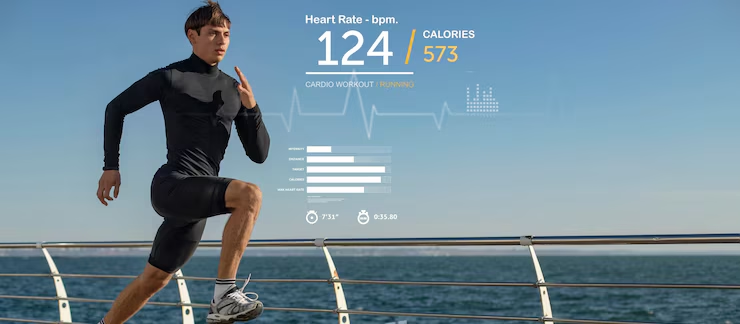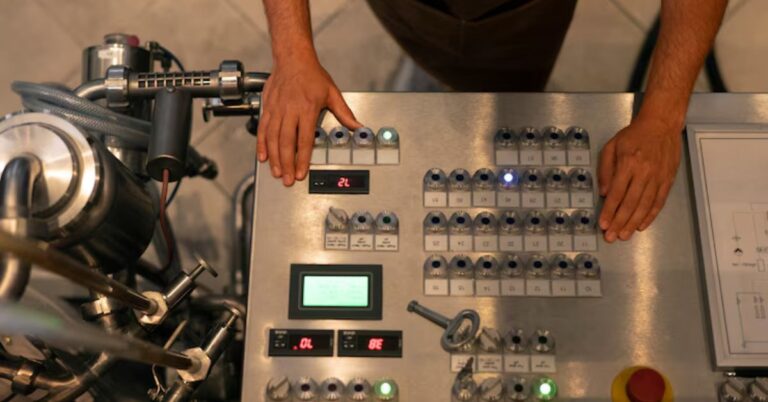Sports Harmonicode Exploring the Power
Although there has been a long-standing connection between sports and technology, the two are now developing at an astonishing rate. Technology and athletics have revolutionised the way we watch and participate in games, with wearables that track stats and complex analytics that inform strategy. But among these innovations, the “sports harmonicode” idea is causing a stir. This concept brings together the exacting detail of coding with the exciting cadence of athletic performance in an intriguing way. However, how does sports harmonicode work, and what effect does it have on players and the sports business generally?
What is Sports Harmonicode?
The term “sports harmonicode” can be better understood by dissecting it into its individual parts. “Harmonicode” is a portmanteau of the words “harmony” and “code,” which together imply a well-balanced system that uses computer methods to analyse and optimise patterns. A sports harmonicode is a system that uses complex algorithms and coding to improve an athlete’s performance in practice and competition.
This idea integrates data gathered from several sources—including sensors, wearables, and cameras—to provide athletes with a seamless experience. Sports harmonicode incorporates several layers of data, including as biomechanics, dietary measurements, game strategy, and psychological data, in addition to analyzing an individual’s activity and heart rate. In the end, it makes sure that players may give their all without being hurt or not getting the most out of themselves.
The Foundation of Sports Harmonicode
The recent meteoric rise of sports analytics provides the groundwork for sports harmonicode. The use of gut feelings alone in making important judgements is no longer acceptable for coaches and trainers. They rely on carefully recorded information instead to construct all-encompassing images of athletic prowess, strengths, and shortcomings. Sports harmonicode, on the other hand, goes above and beyond by doing more than just finding patterns in this data; it uses them in real time to attain peak performance.
A football player, equipped with a GPS vest, may, for instance, have their deceleration, sprinting speed, and even degrees of exhaustion tracked while they play. Sports harmonicode uses sophisticated coding algorithms to decipher these factors, allowing for greater insights, but such technology is not new. Even the most subtle inefficiencies in the player’s motions may be detected by algorithms, which then propose instant fixes. These enhancements, when implemented gradually, provide the groundwork for enhanced gameplay and general athletic growth.
Curiously, this idea isn’t confined to singular cases. The purpose of a sports harmonicode is to integrate data gathered from several sports or entire teams into a larger network. By taking a comprehensive view, we can be sure that nothing is left out of our quest for greatness.
Real-life Applications of Sports Harmonicode
Sports harmonicode’s adaptability to a broad range of fields, activities, and enterprises is one of its greatest strengths. The world of professional sports is one where sports harmonicode has had a particularly visible impact. A variety of sports teams are taking use of these strategies, including cricket, American football, soccer, and basketball. Sports harmonicode offers data-driven insights that may be used to optimise every aspect of a player’s game, including passes, dribbles, tackles, and bat swings.
Consider the sport of basketball. Having a roster of players with a wide range of abilities is a common difficulty for coaches. They can figure out which lineups perform best and how certain combinations will do against opponents using sports harmonicode. They can improve their odds of winning by modifying their strategies through this process.
Injury prevention is another intriguing area of use. Injuries causing professional athletes to miss time from competition are a major concern. By analysing biomechanics, sports harmonicode can foretell when an athlete may be overtraining. Coaches and physiotherapists can prevent expensive injuries by proactively adjusting training programs based on data collected from factors such as joint stress, load distribution, and muscle imbalances.
In addition to professional athletes, sports harmonicode is great for fitness fanatics and amateurs. More and more people are able to access their own performance data because to the proliferation of smart gadgets and fitness trackers. These gadgets use sports harmonicode technology, allowing even amateurs to get tailored criticism on their technique and training routines.

How Sports Harmonicode Enhances Fan Engagement
Sports harmonicode is interestingly having a major impact on increasing fan engagement in addition to boosting sporting performance. The rise of fantasy leagues and other statistically-based forms of sports betting reflect a growing interest in statistics among sports enthusiasts. With Harmonicode’s expanded data, fans can take their interest in sports even further, making game day even more thrilling.
Envision watching a football match online with real-time statistics showing how fast each player is making decisions and how much energy they have left in addition to the usual broadcast. By incorporating sports harmonicode into these experiences, fans may feel more immersed with the action than ever before. Not only can fans see their favourite athletes’ actions, but they can also deduce the reasoning behind their decisions and the variables that may influence them.
Another fast-growing sector that uses this technology is e-sports, which are similar to traditional sports in many respects. Coaches and players in e-sports can hone their tactics and skills with the help of sports harmonicode. At the same time, statistics provide a wealth of information that e-sports fans can use to enhance their viewing experiences, making them more analytical and immersive.
Don’t Miss: Exploring the Significance of http://www.arlindmorina.info
Challenges in Implementing Sports Harmonicode
The implementation of sports harmonicode isn’t problem-free, despite its enormous potential. Data management is a major obstacle. During athletic practices and games, massive quantities of data are created, but not all of it is valuable. Finding patterns in such a large quantity of data that may be used to make decisions can be a challenging task.
The technology that powers sports harmonicode is also not widely available. Although well-funded professional teams may have little trouble integrating such systems, amateur and grassroots sports groups sometimes do not have the resources to do so. To close this divide, we need economic models that benefit everyone, not just the wealthy, or open-source alternatives.
The risk of being too dependent on technology is another issue. The human factor in sports can never be disregarded, even while harmonicode does offer useful insights. In addition to physical ability, emotional and psychological aspects, such as maintaining motivation under intense pressure or fostering team unity, frequently play a significant role in an athlete’s success. The scientific rigour of sports harmonicode must be balanced with the inherent uncertainty of human behaviour.
The Future of Sports Harmonicode
A bright future lies ahead for sports harmonicodes. There is an almost infinite number of ways that wearable technology and more advanced artificial intelligence could improve athletic performance and enjoyment. The development of next-generation sensors capable of monitoring hydration status and tiredness index in real-time while exercising is currently underway in the scientific community.
Further integration of digital and physical realms appears to be in the cards for harmonicode. It is possible that athletes may be able to practice in more realistic but regulated settings using virtual reality (VR) and augmented reality (AR) systems that are driven by harmonicode algorithms. A tennis player, for instance, might practise against a variety of opponents in a simulated environment, with real-time feedback provided by an integrated harmonicode system.
Rehabilitating wounded athletes is another promising new area of study. Sports harmonicode-powered machines might track rehabilitation progress and tailor treatments and workouts to each patient’s specific needs. With this degree of customisation, recoveries are certain to be faster and safer.
Conclusion
More than a passing fad, the sports harmonicode heralds a sea change in our understanding of athletics and performance. Through the integration of data, science, and technology, it paves the way for players to realise their maximum potential and strengthens the bond between sports fans and the games they adore. Sports harmonicode may revolutionise your experience whether you’re a professional player, a weekend warrior, or a keen fan.
Going forward, one thing stands out: the sports harmonicode is more than a notion or a technique. That’s the way sports will be understood, played, and experienced in the future. A revolutionary shift is possible in the sports world as a result of its potential to enhance performance, forecast results, and prolong players’ health.
Don’t Miss: Level Up Your Game Launch with Localization-Driven Marketing







